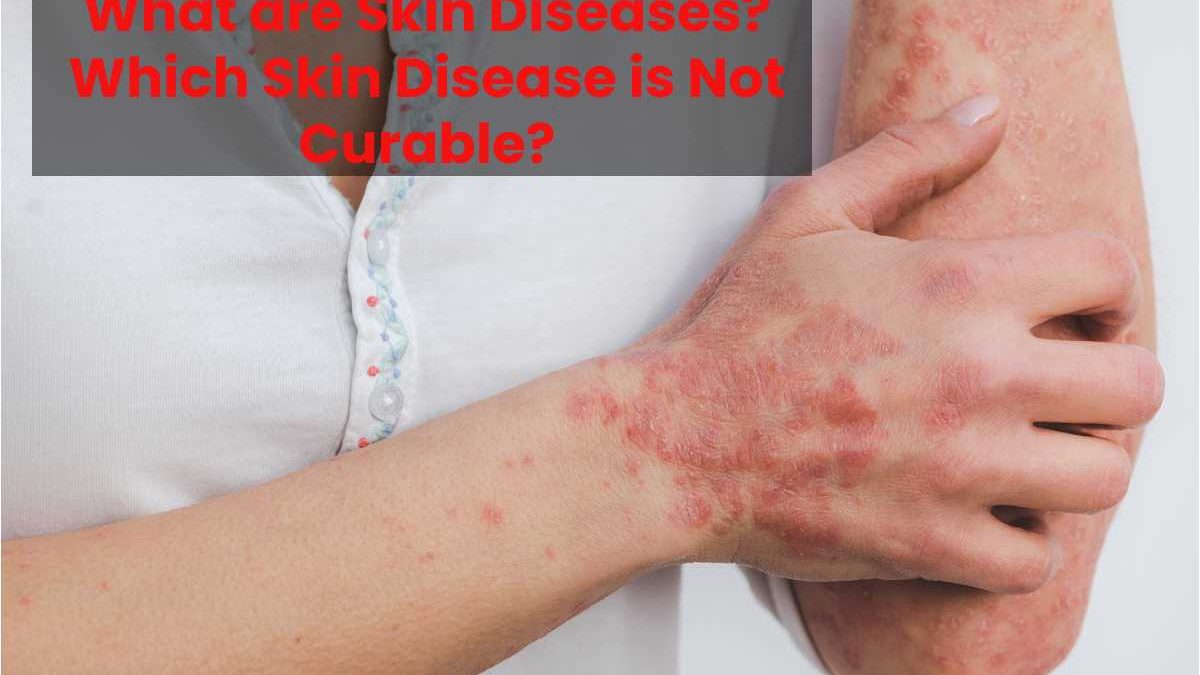Skin Diseases – Your skin is the big organ that covers and protects your body. Your skin has many functions. It works to:
- Hold in fluid and prevent dehydration.
- Help you feel sensations, such as temperature or pain.
- Keep out bacteria, viruses, and other causes of infection.
- Stabilize your body temperature.
- Synthesize (create) vitamin D in response to sun exposure.
Hide diseases include all setting that clog, irritate or inflame your skin. Often, skin diseases reason rashes or other changes in your skin’s appearance.
Table of Contents
Common Skin Troubles and How to Treat Them
Acne and other skin situation are more ordinary than you think. According to the National Institute of Health, about 80% of communities between 11 and 30 experience acne breakouts. The excellent information is that as these skin situations are so every day, there’s usually a solution obtainable to treat them. Here are four of the most ordinary skin harms and what you container do to find some relief
Acne.
Acne is the most common skin state in the country. While it’s typically considered a teenage skin issue, many adults also suffer from Acne. Acne doesn’t just occur on the face. The container also appears on the upper back, neck, shoulders, and chest. Acne breakouts typically happen when your pores have become clogged with oil and dead skin cells, which remain usually driven by hormones. You container treat Acne using over-the-counter cleansers, toners, and moisturizers. However, if your Acne is harsh and does not improve using an over-the-counter method, it’s best to reach out to a board-certified dermatologist.
Atopic Dermatitis
Also Read, Eczema (atopic dermatitis) is most frequent among children, but in containers also presents for the first time in adults. Atopic dermatitis is when a scaly, dry patch appears on the skin, counting the hands, cheeks, face, and scalp, and is typically very itchy and occasionally painful.
Though eczema is a long-term condition, it can be treated and managed with a good dip and moisturizing regimen, topical prescriptions, and oral medications like antihistamines to decrease itching.
Psoriasis.
Also Read, Psoriasis is a skin condition affecting 7.4 million Americans and is caused by the body rapidly generating new skin cells with concurrent inflammation. It is characteriz by red scaly patches and plaques of skin on the knees, lower back, elbows, and scalp. Psoriasis differs from eczema in that the state typically appears as red raised plaques with a silvery-white scale, often thicker and more bright red than skin with atopic dermatitis. Together psoriasis and eczema can be painful and itchy. Many treatment options, from topical prescription medications to lightbox therapy to oral or injectable drugs, are available with your dermatologist.
Rosacea.
Rosacea is a skin state characterized by a red patch with visible blood vessels on the face, often involving the nose, cheeks, and chin. In some bags, redness may also be visible on the forehead, back, chest, and ears. Also Read, The condition may cause red and pus-filled bumps depending on your rosacea type. Also Read, If left untreated, the state may worsen over time. Rosacea is a chronic skin condition but canister treated with topical medications, oral prescriptions including antibiotics, and even laser for persisting redness.
If you’re seeking dermatology military in Pinellas or St. Petersburg, FL, Mahoney Dermatology Specialists offers a wide range of skin care services, including psoriasis treatment, acne treatment, scar action, and more. To learn more regarding our dermatology services or to schedule a meeting with us, contact Mahoney Dermatology Specialists today!
How is a Skin Disease Diagnosed?
A healthcare provider canister diagnoses a skin disease by visually examining your skin. Also Read, If looking at your skin doesn’t afford clear answers, your supplier may use tests such as:
- Biopsy, removing a little piece of skin to look at below a microscope.
- Culture, captivating a skin sample to test for bacteria, fungus, or viruses.
- Skin patch test, applying a small amount of substance to test for allergic reactions.
- Blacklight examination (Wood light test) uses ultraviolet (UV) light to view your skin’s pigment more clearly.
- Diascopy, pressing a microscope slide next to a skin patch to see if the skin changes color.
- Dermoscopy uses a hand-held device called a dermoscopy to diagnose skin lesions.
- Tzanck test, investigative the fluid from a blister to ensure herpes simplex or herpes zoster
Conclusion:
Some of the most common skin diseases include Acne, infertile skin follicles that lead to oil, bacteria, and dead skin buildup in your pores. Alopecia areata, losing your hair in small patches. Atopic dermatitis (eczema) is dry, itchy skin that leads to swelling, cracking, or scaliness.

